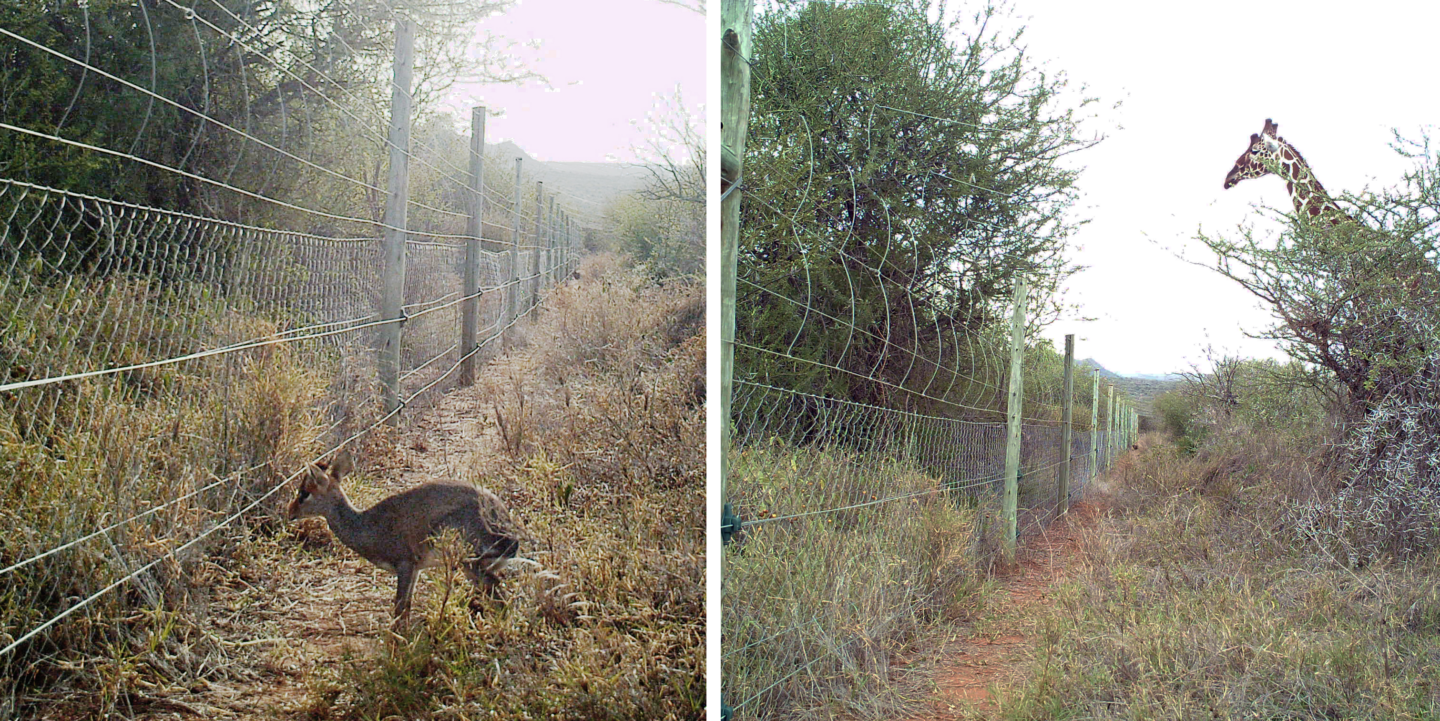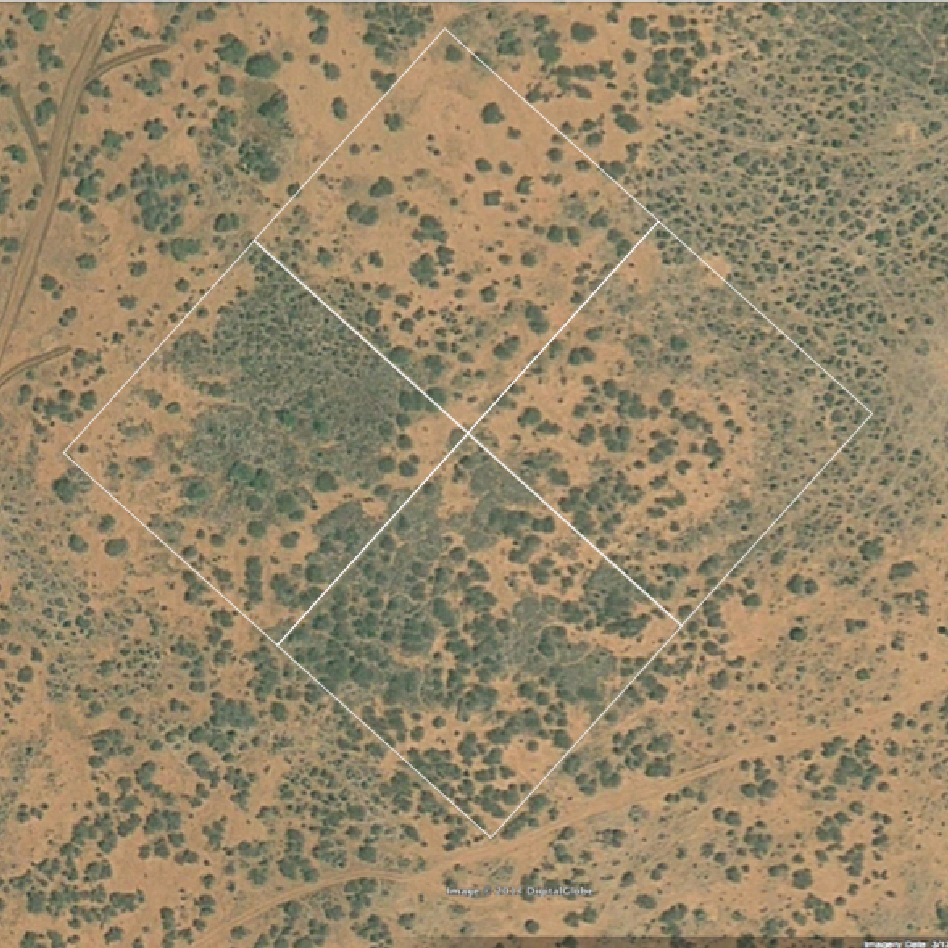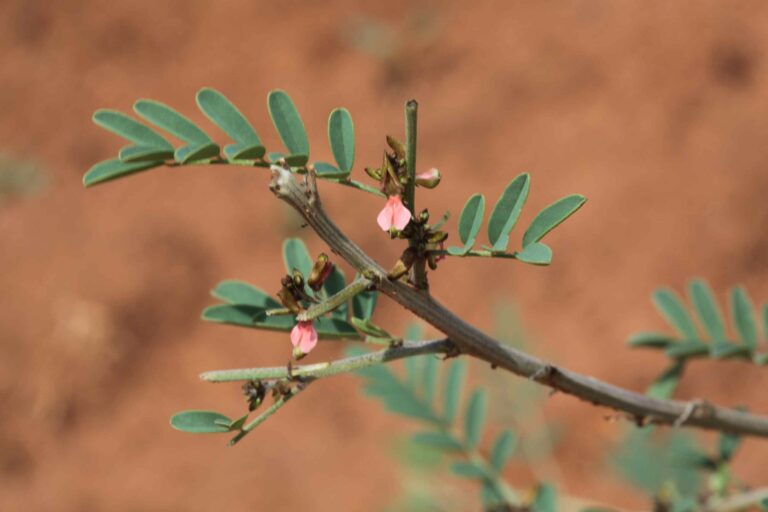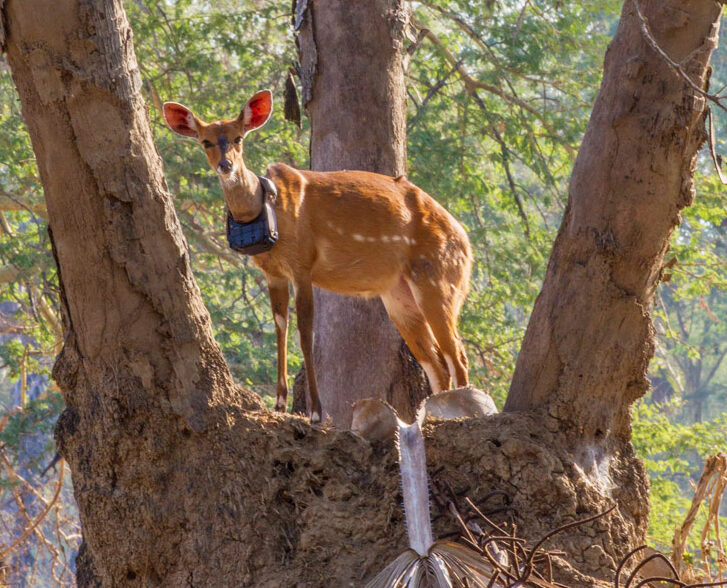African savannas and their large mammals are iconic, but many fundamental questions about how the mammals shape the landscape, and vice versa, remain unanswered. These questions are timely, because large-mammal populations are also declining worldwide, portending major shifts in the balance of many ecosystems. A better understanding of basic large-herbivore ecology will enable us to forecast these changes and facilitate conservation by refining management strategies.
The UHURU Project
At the Mpala Research Centre in central Kenya, our work centers on a long-term experiment, established in 2008 by Jake Goheen, Todd Palmer, and Rob Pringle. Dubbed UHURU, for “Ungulate Herbivory Under Rainfall Uncertainty”, the experiment comprises four treatments, each applied to nine replicate 1-ha plots. The treatments exclude successively smaller-bodied subsets of the large-herbivore fauna using electrified fencing, thereby simulating a process of size-biased extinction. Megaherbivore-exclusion fences remove only elephants and giraffes; mesoherbivore-exclusion fences remove all species larger than ~40kg (including eight species of bovids and equids, along with elephants and giraffes); total-exclusion fences exclude all herbivores larger than ~5kg (the diminutive dik-dik, along with all larger species). For comparison with these fenced plots, we have a set of unfenced control plots that is accessible to all species. The 36 total plots are distributed across a natural rainfall gradient, enabling us to study how the strength and direction of herbivores’ effects depend on climate; similarly, the longitudinal dataset from this experiment will enable us to assess the impacts of droughts and other environmental fluctuations.

The UHURU ‘total-exclusion’ treatment excludes herbivores ranging from 5-kg dik-dik to 1500-kg giraffe.

UHURU comprises four 1-ha exclusion treatments, each replicated nine times in blocks like the one shown here. There are three blocks in each of three sites, from the arid north to the mesic south.
This unique experimental setup, described in detail by Goheen et al. (2013), offers scope to address a diverse array of ecological questions. Recent work has addressed the impacts of large herbivores on understory plants (Pringle et al. 2014; Louthan et al. 2013, 2014; Young et al. 2013), trees (Ford et al. 2014), small mammals (Young et al. 2015), insects (Crutsinger et al. in prep), and ecosystem processes such as nutrient cycling and organic matter decomposition (Ngatia et al. 2014). We recently published raw data from the first five years of UHURU, to make this high-resolution dataset available to other researchers (Kartzinel et al. 2014).
From these studies, we have learned (among other things) that herbivores of different sizes play largely non-overlapping functional roles in controlling invasive woody shrubs (Pringle et al. 2014); that climatic stress mediates the strength of herbivore impacts on plant populations (Louthan et al. 2014); and that large carnivores like leopards and African wild dogs make savanna tree communities less thorny by altering the foraging patterns of impala (Ford et al. 2015)
DNA-Based Analysis of Large-Herbivore Diets
An early realization from UHURU was that it is difficult to understand the impact of herbivores on plant communities without knowing what, exactly, different herbivore species are eating. To that end, post-doc Tyler Kartzinel is spearheading an effort (in collaboration with botanists based at the Smithsonian Institution and the National Museums of Kenya) to use DNA meta-barcoding to identify the plant species present in herbivore fecal samples.
This approach is already painting a fascinating and highly resolved picture of diet selection and niche partitioning within the diverse large-herbivore guild at Mpala. Future work will use these data to help explain the effects of the UHURU treatments on different plant species. We are also using this technique to explore trophic relationships in the recovering large-herbivore fauna of Mozambique’s Gorongosa National Park.

A GPS-collared female bushbuck stands on a termite mound in Gorongosa National Park.
Foraging Behavior and Energetics of Antelope

A GPS-collared female bushbuck stands on a termite mound in Gorongosa National Park.
In Gorongosa, we are also using state-of-the-art GPS telemetry to study three closely related antelope species that differ four-fold in body size (bushbuck, nyala, and kudu). This work is in collaboration with former post-doc Ryan Long, now an Assistant Professor in the Department of Fish and Wildlife Sciences at the University of Idaho. A major goal of this work is to understand how the spatial distribution of food and thermal resources (in the form of shady, nutrient-rich termite mounds) affects behavior and energetics (see Spatial Patterning) The rich dataset is also providing insights into how foraging and thermoregulatory strategies depend on body size, nutritional condition, and reproductive status. This ongoing work is funded by the National Geographic Society, and the unlucky story of one of our collared kudu was recently reported by National Geographic News.